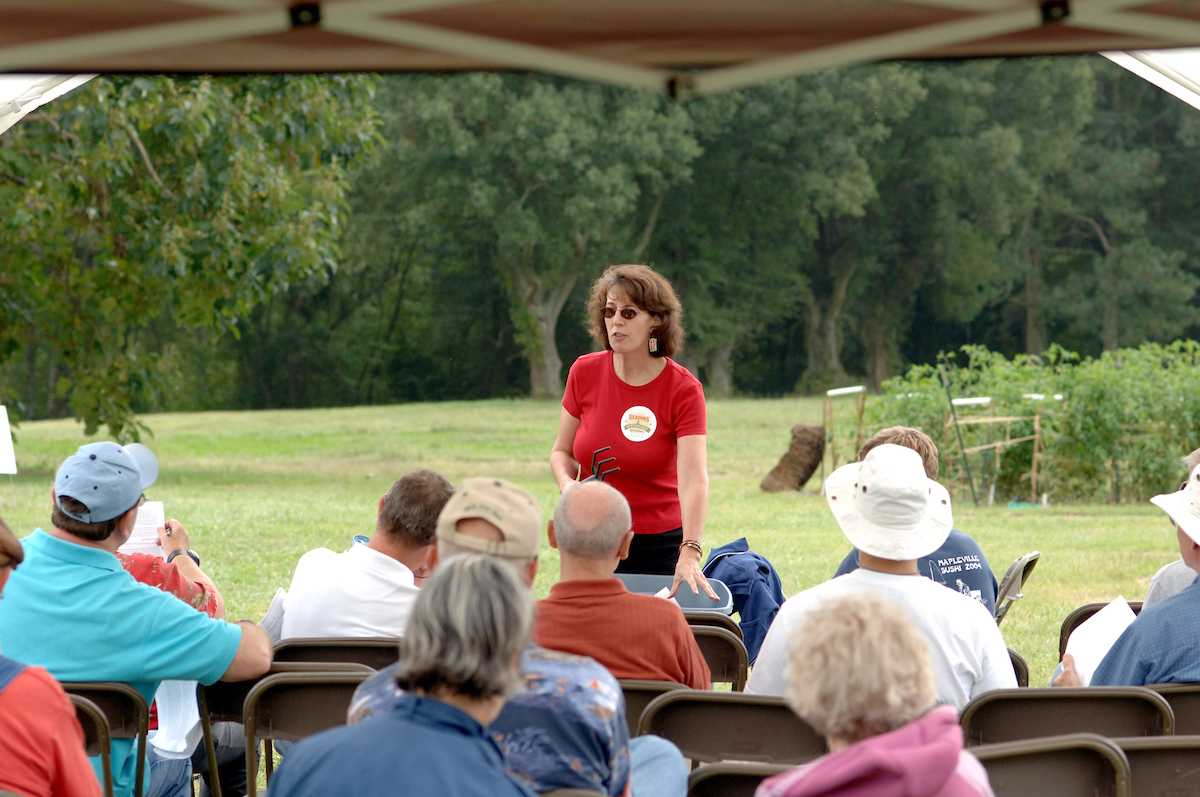Using Agritourism to Promote Local Foods
go.ncsu.edu/readext?796194
en Español / em Português
El inglés es el idioma de control de esta página. En la medida en que haya algún conflicto entre la traducción al inglés y la traducción, el inglés prevalece.
Al hacer clic en el enlace de traducción se activa un servicio de traducción gratuito para convertir la página al español. Al igual que con cualquier traducción por Internet, la conversión no es sensible al contexto y puede que no traduzca el texto en su significado original. NC State Extension no garantiza la exactitud del texto traducido. Por favor, tenga en cuenta que algunas aplicaciones y/o servicios pueden no funcionar como se espera cuando se traducen.
Português
Inglês é o idioma de controle desta página. Na medida que haja algum conflito entre o texto original em Inglês e a tradução, o Inglês prevalece.
Ao clicar no link de tradução, um serviço gratuito de tradução será ativado para converter a página para o Português. Como em qualquer tradução pela internet, a conversão não é sensivel ao contexto e pode não ocorrer a tradução para o significado orginal. O serviço de Extensão da Carolina do Norte (NC State Extension) não garante a exatidão do texto traduzido. Por favor, observe que algumas funções ou serviços podem não funcionar como esperado após a tradução.
English
English is the controlling language of this page. To the extent there is any conflict between the English text and the translation, English controls.
Clicking on the translation link activates a free translation service to convert the page to Spanish. As with any Internet translation, the conversion is not context-sensitive and may not translate the text to its original meaning. NC State Extension does not guarantee the accuracy of the translated text. Please note that some applications and/or services may not function as expected when translated.
Collapse ▲Increasing the consumption of local foods can stimulate local economies and foster environmental sustainability (Sadler et al., 2015). Federal and State policies seek to increase local foods consumption to maximize these benefits, but have achieved varying levels of success (Martinez, 2016).
These mixed results call for identifying innovative and more effective approaches to promote local foods consumption. Agritourism — when working farms offer educational or recreational activities for visitors such as U-pick — has the potential to spark consumers’ interest in local foods and motivate support for local agricultural products (Gil Arroyo et al., 2013).
The positive impact of agritourism experiences on visitors’ perceptions of local foods and their intentions and willingness to advocate for and purchase local foods found in this study amplifies the already known economic (e.g., increase of profits), environmental (e.g., wildlife conservation), and socio-cultural (e.g., heritage preservation) benefits of agritourism.
 These marketing benefits position agritourism as an effective way to reconnect agricultural producers with consumers and strengthen local food systems, which combined can contribute to local economies and promote sustainability over the long term. Thus, as family farms seek to remain competitive in changing agricultural markets, they may want to consider agritourism as a means to effectively promote local foods, which ultimately can increase their sales.
These marketing benefits position agritourism as an effective way to reconnect agricultural producers with consumers and strengthen local food systems, which combined can contribute to local economies and promote sustainability over the long term. Thus, as family farms seek to remain competitive in changing agricultural markets, they may want to consider agritourism as a means to effectively promote local foods, which ultimately can increase their sales.
We suggest that farmers welcoming visitors on their farms undertake three main managerial actions to magnify the marketing role of agritourism: improve on-site educational signage, expand visitors’ opportunities to purchase locally grown/produced products, and facilitate visitors’ recommendation of agritourism and local foods to family and friends.
Policymakers seeking to promote local foods and local foods systems can refer to our study results to support family farms offering or seeking to offer agritourism. However, it is important to keep in mind that other obstacles to local foods consumption, such as availability at stores, may persist as substantial barriers. Thus, concerted efforts should seek to reduce physical (e.g., access) and personal (e.g., perceptions) barriers affecting local foods producers, agritourism farms, and the consumption of local foods.
Suggestions to magnify the marketing role of agritourism.
- Create signage or tours that highlight the benefits of local foods to communities and the environment.
- Expand opportunities to sell farm products on site and online, displaying the outlets where farm products can be purchased.
- Facilitate opportunities for visitors to share farm experiences with others by providing promotional materials (e.g., flyers).




